PICK OF THE MONTH
 Various Composers
Various Composers
Field Recordings
Bang on a Can All-Stars
Cantaloupe (dist. Naxos)
Since the very beginning of the 20th century, recordings made in the “field” (i.e. in bars, homes, social halls, backyards, etc.) have exerted a powerful draw on composers. Bartók and Kodály wrote classical pieces based on tunes they collected in remote Hungarian villages; Edgard Varèse used cut-up tapes of train noises and other sounds from urban environments to create collage-like musique concrète; Steve Reich played prerecorded tapes of a street preacher out of phase with each other in order to create shifting, shimmering rhythmic patterns. Today the recording techniques are largely digital, but the fascination with blending prerecorded voices, music, and noises with live instrumentation remains. Thus we have this wonderful collection of miniatures from the likes of Julia Wolfe, Christian Marclay, Tyondai Braxton, Anna Clyne, and (yes) Steve Reich, all of which incorporate prerecorded sounds with live performance in a variety of ways. Florent Ghys’ An Open Cage takes a recording of John Cage reading from his diary and layers onto it the sounds of musicians duplicating the pitches and rhythms of Cage’s reading; Wolfe adds musical accompaniment to a recording of a French Canadian folksinger; Braxton uses electric and acoustic instruments plus the musical pitches generated by casino slot machines to create a crazy quilt of sound on Casino Trem; and Todd Reynolds contributes a piece based on an old LP recording of Southern Baptist preachers. Much of this music is remarkable; all of it is well worth hearing, and the album should be considered an essential purchase for all library collections.
CLASSICAL
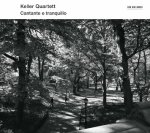 Various Composers
Various Composers
Cantante e tranquillo
Keller Quartett
ECM
2324
Although the label deserves a rap on the knuckles for failing to make clear on the external packaging of this (full-priced) disc that it consists primarily of previously-issued content–only the György Kurtág selections appear to be previously unreleased–there’s no arguing with the quality of the music. In keeping with the title, the Keller Quartett gathered earlier recordings of slow movements from works by composers as stylistically disparate as Bach, Ligeti, Beethoven, Schnittke, Knaifel, and Kurtág, creating a gorgeous program that at times transcends its overall melancholy to communicate a quiet, glowing joy. Libraries that already own the previous recordings don’t need to replace them with this one, but for individual listeners the compilation offers a wonderful musical experience.
 Francisco López Capillas
Francisco López Capillas
Missa Re Sol; Missa Aufer a nobis; Motets
Capella Prolationum; Ensemble La Danserye
Lindoro (dist. Allegro)
NL-3025
These are world-premiere recordings of the masses by Francisco López Capillas, the composer known as the “Ockeghem of Mexico” — a sobriquet that was perhaps not meant entirely as a compliment, given that he flourished in the mid-17th century, a time when Ockeghem’s music would have seemed terribly old-fashioned. Nevertheless, López Capillas’s music is richly rewarding and certainly incorporates significant elements of baroque style alongside its old-school monochoral polyphony. Early-music enthusiasts will be interested to note that on this recording, the performers are playing and singing from facsimile reproductions of the original manuscript (and thus from mensural rather than modern notation). Recommended.
 Franz Joseph Haydn; Wolfgang Amadeus Mozart
Franz Joseph Haydn; Wolfgang Amadeus Mozart
Sinfonia concertante; Concertos
Arcangelo / Jonathan Cohen
Hyperion (dist. Harmonia Mundi)
CDA68090
Rick’s Pick
There’s nothing new or innovative or revelatory about this recording, which consists of very familiar material: Haydn’s Sinfonia concertante for violin, cello, oboe, and bassoon with chamber orchestra, and Mozart’s equally celebrated concertos for oboe and for bassoon. But what this recording lacks in novelty it more than makes up for in sheer joyful élan. The performances aren’t taken at breakneck tempos, but they feel like they’re flying; the soloists don’t indulge in self-consciously virtuosic cadenza playing, but are clearly enjoying themselves so much that it’s impossible not to be caught up. And the music itself is, of course, at the very pinnacle of high-classical loveliness. Highly recommended to all library collections.
 Johann Christoph Friedrich Bach
Johann Christoph Friedrich Bach
3 Symphonies (reissue)
Neues Bachisches Collegium Musicum Leipzig
Brilliant Classics (dist. Naxos)
94780
The high-midline pricing on this straight reissue of a more than 20-year-old recording is a bit puzzling, but the music isn’t puzzling at all. J.C.F. Bach was the most obscure of J.S. Bach’s several musical sons, and to be completely frank, it wasn’t only because he lacked his brothers’ gift for self-promotion — it was also because his musical talent was less incandescent than theirs, and his writing less original and influential. But that doesn’t make his music less enjoyable, and any library collecting comprehensively in the Bach family (or in baroque and early classical music generally) would benefit from this very fine recording, which sounds like it was made using period instruments (though the two-page booklet’s complete lack of information about the recording ensemble makes it difficult to say for sure).
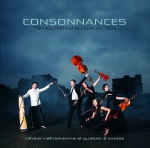 Tri Nguyen
Tri Nguyen
Consonnances
Tri Nguyen; ‘Ilios Quartet
Lunelios
888101
Fusions of Asian and Western classical traditions are nothing especially new, but this one — which actually fuses Western art music with Vietnamese folk music — is something quite different. Composer Tri Nguyen plays a traditional Vietnamese zither, and for this album has arranged a set of folk melodies for his instrument with the accompaniment of a Western-style string quartet. The result is both instantly accessible and quite fascinating; while the musical themes are relatively simple and straightforward, the execution of them is not, and the arrangements do a great job of treading the fine line of paying equal respect to both of the widely disparate traditions that are being brought together. Recommended to both classical and world music collections.
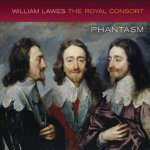 William Lawes
William Lawes
The Royal Consort (2 discs)
Phantasm
Linn (dist. Naxos)
CKD 470
Rick’s Pick
The Phantasm ensemble continues its survey of English music for consort of viols with this outstanding recording of William Lawes’ monumental Royal Consort set and his Three Consorts to the Organ. This is dance music of the highest caliber, and was recognized as such in Lawes’ time though less so 100 years later. Today, the strange liberties he took with chord voicing and rhythm sound pleasantly odd, and his peculiar genius is perhaps easier to recognize. There’s genius too, as always, in the playing of the remarkable Phantasm ensemble. The enhanced resolution of the Super Audio CD format is especially well suited to the sound of viol consorts, and this two-disc set is particularly noteworthy for its sound quality. Highly recommended, especially to early music collections.
 Johannes Brahms; Max Reger
Johannes Brahms; Max Reger
Sonatas for Clarinet and Piano (2 discs)
Guy Yehuda; Ralph Votapek
Blue Griffin (dist. Albany)
BGR363
Rick’s Pick
This is a very nice pairing (or double-pairing, I guess) of clarinet sonatas by two near-contemporaries. Disc 1 puts Brahms’ first clarinet sonata next to Reger’s first, and disc 2 does the same with the composers’ second sonatas. This is an inspired programming choice, as it allows the listener to more fully hear the stylistic contrasts: both of composers working within the Romantic style while Brahms, as always, looks back to the classical and Reger looks forward to modernism. The Brahms pieces ache, the Reger pieces sparkle, and the playing of both Yehuda and Votapek seems to coat everything with gold. Highly recommended to all collections.
 Christan Ernst Graf
Christan Ernst Graf
Five String Quartets
Via Nova Quartett
CPO (dist. Naxos)
777 865-2
Christian Ernst Graf was born in Germany but made his mark as a court composer to the House of Orange-Nassau in the Netherlands. Graf served that noble family faithfully even as its fortunes waned in the late 18th century, and these three string quartets reflect the musical developments of the period — particularly the growing importance of the adagio movement, which would only continue to increase as the classical style fully took hold. Graf’s music marks an important inflection point in the transition from the late baroque to the early classical, and these performances by the Via Nova Quartet (on period instruments) are excellent.
JAZZ
 Claude Bolling; Steve Barta
Claude Bolling; Steve Barta
Suite for Flute and Jazz Piano (Symphonic Arrangement)
Hubert Laws; Jeffrey Biegel
Steve Barta Music
SBMCD-01
Remember this? One of the first (if not the first) jazz-classical fusion pieces to achieve mainstream popularity, this suite for flute and piano trio combined classical forms with jazz rhythms to create a sensation in easy-listening music back in the 1970s. While previous experimenters in this general vein (notably the late Gunther Schuller) had made music that was serious and professorial, not to say forbidding, Bolling’s music was pure whipped cream, and people licked it up. This new version is presented in an orchestral arrangement by pianist Steve Barta and features the great jazz flautist Hubert Laws along with a string quartet; the piano trio is still there, and behind both small combos is a lush drapery of strings, brass, and winds, all of them tastefully organized (and mixed) in such a way as to keep the focus on the flute, piano, bass, and drums, but providing lots of color and texture behind them. The music is still whipped cream, but now it’s as if the whipped cream is floating on top of a big cup of rich hot chocolate. Recommended.
 Scott Hamilton
Scott Hamilton
Plays Jules Styne
Blue Duchess
BDCD005
Rick’s Pick
Mmmmm… a new album by Scott Hamilton? Yes, please. The great tenor saxophonist here focuses on standards by the great Jules Styne, composer of such American Songbook classics as “Time After Time,” “Bye Bye Baby,” and “The Party’s Over.” Hamilton leads a quartet here and continues his long tradition of unapologetically traditional and straightforward swing, building his solos expertly but without ceremony, and playing with the robust but pretty tone that has made him a favored sideman as well as a respected leader for decades. My only quibble here is producer Duke Robillard’s decision to put Hamilton’s saxophone slightly back in the mix with a little bit too much reverb — but that’s only a quibble, and ultimately a matter of personal taste. This album is highly recommended to all libraries.
 Terell Stafford
Terell Stafford
BrotherLee Love
Capri
74138-2
Described in the press materials as “a love letter from one of Philadelphia’s favorite trumpet-playing sons to another,” this is indeed a warm and heartfelt tribute to one of the greatest jazz trumpeters (and composers) of all time: Lee Morgan. The program consists of seven Morgan compositions, rounded out by Alex Kramer’s blues-based “Candy” and Terell Stafford’s own “Favor.” All of these are delivered expertly by Stafford and his quintet in the sturdy hard-bop style that Lee Morgan exemplified. Strongly recommended to all jazz collections.
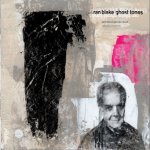 Ran Blake
Ran Blake
Ghost Tones: Portraits of George Russell
A-Side
A 0001
Here’s another tribute album, though this one is much quirkier and more impressionistic. Pianist/composer Ran Blake pays homage to his former New England Conservatory colleague, the late George Russell, whose theories of modal improvisation deeply influenced a whole generation of jazz musicians (including Miles Davis and Bill Evans). Blake’s arrangements are wildly diverse in instrumentation and some are dreamy to the point of abstraction — but others generate a pretty impressive head of rhythmic steam, and all of these pieces (most written by Russell) are imbued with a palpable sense of love, respect, and loss.
 Martin Taylor’s Spirit of Django
Martin Taylor’s Spirit of Django
Gypsy (reissue)
Linn (dist. Naxos)
BKD 090
 Frank Vignola & Vinny Raniolo
Frank Vignola & Vinny Raniolo
Swing Zing!
Self-released
FV-15
Here are two very different takes on the Gypsy jazz tradition. The first is a straight tribute to the unassailable giant of that tradition, Django Reinhardt, delivered by guitar wizard Martin Taylor and his Spirit of Django ensemble. To say that this album is a “straight tribute,” however, is not to say that it apes slavishly the sound of Django’s ensembles; Taylor employs a saxophonist and an accordion player, and his arrangements are much smoother and his sound rounder and less hard-edged than Django’s. I would say that he claims fairly to have captured the “spirit of Django,” but those looking for straight-up Djangology may be disappointed. The Frank Vignola and Vinny Raniolo duo album runs the Django/Gypsy style through an early-swing filter (or is it the other way around?), taking standards like “Cheek to Cheek” and “All the Things You Are” and playing them with alternating tenderness and drive — the uptempo numbers sound like Hot Club material on steroids, the ballads like sweet evocations of 1930s ballrooms and summer nights. Of the two, the Frank & Vinny album is the most fun and joyful, but both are well worth hearing.
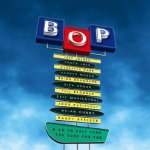 Various Artists
Various Artists
Bop: A CD to Help Fund the Cure for PKD
ArtistShare
AS0138
Rick’s Pick
When my parents were kids, back in the 1940s, “modern jazz” meant bebop, with its lightning-fast tempos and unpredictable, sometimes forbiddingly spiky melodies. When I was a kid, in the 1970s, “modern jazz” meant jazz-rock fusion, with its smooth textures and glossy, pop-inspired melodies. On this delightful album the two traditions meet. Fusion legends like Jeff Lorber, Chuck Loeb, John Patitucci, and Randy Brecker get together to perform a program of bop standards like Thelonious Monk’s “Straight No Chaser” and Charlie Parker’s “Now’s the Time,” playing them with joyful virtuosity and an inviting smoothness. The fact that the proceeds from sales of this disc will go to support research into a cure for polycystic kidney disease just makes it that much better. Highly recommended.
COUNTRY/FOLK
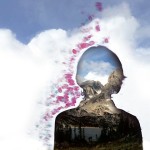 Billy Shaddox
Billy Shaddox
I Melt, I Howl
Folkwise
No cat. no.
Singer-songwriter Billy Shaddox has never really thought of himself as a folk singer, and with his third album he starts breaking out of that ghetto in a pretty decisive way: while his Americana roots remain quite visible, there’s a new poppiness to his sound (thanks in part to production by Sam Kassirer) and the combination is really kind of perfect: the surfaces are smooth without being too shiny, the hooks are sharp and deep, and the lyrics are introspective but not annoyingly egocentric. Very, very nice.
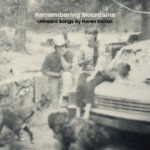 Various Artists
Various Artists
Remembering Mountains: Unheard Songs by Karen Dalton
Tompkins Square
TSQ 5173
Karen Dalton was a folk and blues singer in New York in the 1960s; she died at age 56 of complications from AIDS, leaving behind only two commercially-recorded albums, neither of which featured any original songs. But she also left some lyrics and sketches of chord progressions, and for this tribute album a group of eleven women singer-songwriters (including Patty Griffin and Lucinda Williams) have fleshed out those sketches, creating a haunting monument to a talent lost too soon. Interestingly, each of these artists gave her chosen song a dark and brooding setting — there’s not a rocker (or anything close to one) anywhere here. But all of it sure is gorgeous.
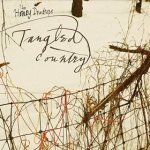 Honey Dewdrops
Honey Dewdrops
Tangled Country
Self-released
No cat. no.
A couple of years ago I raved about the third album from this young couple, characterizing it as “startlingly perfect.” I could honestly say the same about this, their fourth. The formula hasn’t changed much: we’re still talking about explicitly folk-derived original songs delivered quietly and achingly, in tight harmony, with a minimum of acoustic accompaniment. And with the exception of one intrusive (to me, anyway) harmonica, we’re still talking about a sterling perfection of taste when it comes to arrangements, and tunes that will stick with you for days. I hope they’re making a living at this, because the world will be poorer if they have to spend time on day jobs.
 Solitaire Miles
Solitaire Miles
Susie Blue and the Lonesome Fellas
Seraphic
3743-15
Solitaire Miles’ usual gig is jazz, but on this album she stretches out into Western swing territory, performing classic songs from the likes of Bob Wills and Spade Cooley — songs like “I’ll Never Be Free,” “Crazy ‘Cause I Love You,” and “Hang Your Head in Shame.” Miles’ style is more torchy and bluesy than honky-tonky, and her backing band is minimal (no big horn sections here). As a result, this album comes across as more of a personal interpretation of the Western swing tradition than a simple celebration of it, and that makes it both stronger and more interesting than a straight genre exercise would have been. And she’s got a great voice. Recommended.
ROCK/POP
 The Fall
The Fall
Sub-lingual Tablet
Cherry Red
CDBRED660
Forty years after its founding, the Fall’s formula remains the same: surf-punk instrumental tracks accompanying snarling declamations from Mark E. Smith, the founder and only remaining member of this legendarily difficult band. Back in the day, there would be moments of Dadaist brilliance emerging from the angular, metallic murk: “Carry Bag Man,” “Hip Priest,” “Oswald Defence Lawyer” (“embraces the stuffed corpse of Walt Whitman”), etc. Now, Smith sounds a little bit bored, or maybe just fed up. But a new Fall album is still something to take note of, and if your patron base includes the threshold level of medium-superannuated postpunks, I would recommend picking this one up for the collection.
 Basnectar
Basnectar
Into the Sun
Amorphous
019
Rick’s Pick
I’ve been a huge fan of Lorin Ashton for ten years now, ever since I heard his album Mesmerizing the Ultra back in the mid-2000s. Recording and performing as Bassnectar, he has created a dance music sound that is completely his own, even as it draws deeply from techno, dubstep, rock, metal, and dub influences. What characterizes his music consistently is a certain sweetness and generosity of spirit that is impossible to fake — not to mention an effortless way with a hook, whether the hook be melodic, rhythmic, or textural. This is some of the best driving music ever made. Highly recommended.
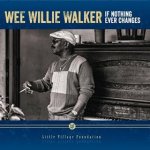 Wee Willie Walker
Wee Willie Walker
If Nothing Ever Changes
Little Village Foundation
LVF 1004
Ever heard of Wee Willie Walker? No, you haven’t — at least, not unless you’ve been paying unusually close attention to the Minneapolis/St. Paul soul-music scene for the past several decades. In his youth Walker cut a few singles for the Chess and Goldwax labels, but he’s been almost completely ignored for most of his adult life. As this album (organized by blues singer Rick Estrin) makes clear, his gift is tremendous, and when given a chance to stretch out in front of a backing band of ace session players he’s capable of making rich, gritty, soulful magic. If you miss the glory days of Muscle Shoals, Motown, and Memphis, then snap this one up immediately.
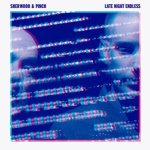 Sherwood & Pinch
Sherwood & Pinch
Late Night Endless
On-U Sound/Tectonic (dist. Redeye)
ONUCD127
Rick’s Pick
Question: Put the undisputed world champion of dark and minimalist dubstep into the studio with the godfather of avant-garde post-punk reggae production, and what do you get? Answer: I don’t know, but it sure is dark, minimalist, avant-garde, post-punk, and reggae-inflected. And brilliant, of course: the grooves are elephantine, the beats are judderingly disconcerting, and the vocal samples come from such heaven-sent sources as Prince Far I, Daddy Freddy, Congo Ashanti Roy, and Andy Fairley. Yes, Dub Syndicate fans will recognize many of these samples, but you’ve never heard them rendered in just this way. This is what dubstep sounds like when it’s made by grownups. Highly recommended.
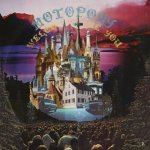 Motopony
Motopony
Welcome You
eOne Music/Fast Plastic
9451
The sophomore effort from this Seattle-based band is billed as “a poppy indie folk album with propulsive psych rock sensibilities,” but I have to say that I’m not hearing much folk through the psychedelia. Not that I’m complaining; from the whimsical wordplay of the album-opening title track (and how often do you hear the phrase “whimsical wordplay” used to describe modern pop music?) to the slow-burning and multilayered freakout of “Where It Goes” (complete with fake sitar!), Motopony’s sound is a glorious mess of 1960s and 1970s stylistic gestures and clever sonic dysjunctions. It’s very possible that this album is even more fun if you’re high, but I’ll never know.
 Peptalk
Peptalk
Islet
Home Assembly Music
11
If you miss mid-century exotica by the likes of Esquivel, if you found yourself watching Twin Peaks for the music, or if you own the Blade Runner soundtrack, then you should seriously consider picking up the debut LP by Peptalk, a trio consisting of percussionist Shayna Dunkelman, vocalist Angelica Negron, and multi-instrumental electronics guy Michael Carter. I’ve listened to this album several times now and truly can’t decide whether I like it, which probably means it’s very good in ways that other people are wired to grasp more quickly than I am. Pick it up and see what your patrons think. Some may wonder what on earth you were thinking, but I bet others will jump up and down.
WORLD/ETHNIC
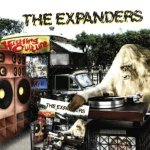 The Expanders
The Expanders
Hustling Culture
Easy Star
ES-1050
Rick’s Pick
“Everyone has a hustle, and ours is roots & culture music,” says Expanders singer Devin Morrison. And it is indeed; this is reggae music that could have been written and recorded in the mid-1970s, which may have been a crummy time for American pop music but was the classical age of roots reggae. Are the Expanders slavish purveyors of a bygone musical style? Yes, absolutely. So why is this album so compelling? Because hooks. Also because grooves that sway like a boulder on a rope swing and vocal harmonies as tight and smooth as you’ve ever heard. Cut for cut, this could easily turn out to be the best reggae album of 2015.
 Hu Vibrational
Hu Vibrational
Epic Botanical Beat Suite
M.O.D. Technologies/Meta
META 019
Now, here’s a strange one. Led by percussionist Adam Rudolph (and helped out by such sidemen as bassist Bill Laswell and flutist Steve Gorn), Hu Vibrational is a percussion ensemble that builds panethnic collages of beats and grooves, spicing them up with eerie clouds of electronica and the occasional instrumental solo, and then remixing everything after the fact to create world music of a kind you’ve never heard before. Imagine if Jon Hassell played percussion rather than trumpeter — that’s pretty much what this sounds like. Intrigued? You should be — for such generally relaxing music it’s really kind of a blast.
 Banco de Gaia
Banco de Gaia
Last Train to Lhasa (deluxe reissue; 4 discs)
Disco Gecko
GKOCD017
Back in 1995, Toby Marks (recording as Banco de Gaia) was looking for new inspiration. He found it in the Free Tibet movement, and accordingly created this instrumental concept album around the idea of the Qingzang Railway, which was built by the Chinese government to facilitate the migration of Chinese citizens into Tibet (and thereby the assimilation of Tibet into China). While the unspoken message here is one of protest, the music itself is free of overt political messages; the music is electronic, alternating between polite dance beats, ambient sound washes, and vaguely Asian samples and melodic elements. This four-disc reissue of the original two-disc album includes lots of remixes and extended versions, and the packaging is lovely. Pop collections should seriously consider picking it up before the limited edition of 3000 copies is sold out.
 Various Artists
Various Artists
Peru Boom!: Bass, Bleeps, and Bumps from Peru’s Electronic Underground
Tiger’s Milk/Strut
TIGM005CD
Rick’s Pick
Ha — I bet you didn’t even know Peru had an electronic underground, did you? Well, you stand corrected; or, more likely, you wiggle and bounce and wave your hands in the air corrected. This wonderful collection of tropical bass and electro-cumbia tracks will sound both weird and entrancing to most American or British ears, incorporating as it does all kinds of familiar elements and braiding them together with South American sounds that will be much less so. There are highlight tracks from Dengue Dengue Dengue, Tribilin Sound, and Chakruna, but not a single one is less than fun. Highly recommended to all world music collections.